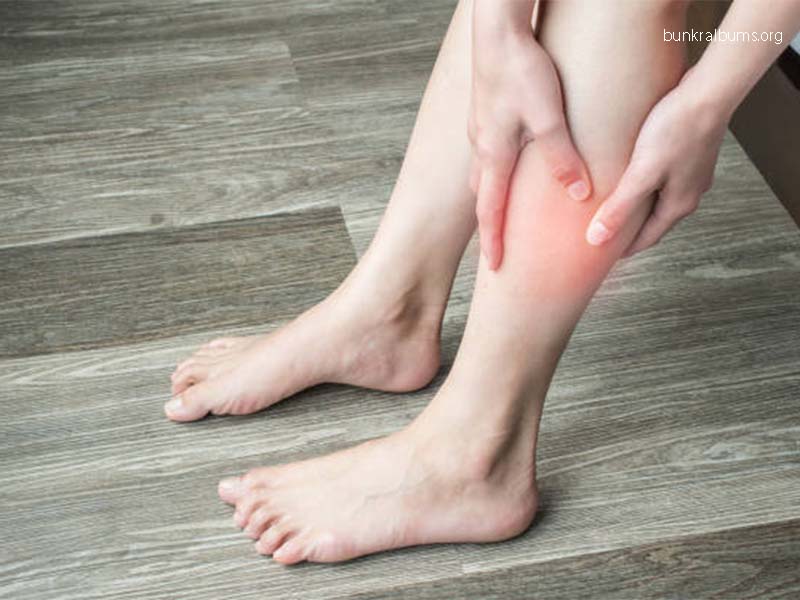Blood clots are essential for healing injuries, but they can also be life-threatening when they develop inappropriately. One such condition is deep vein thrombosis (DVT), where a blood clot forms in the deep veins of the leg. If a clot breaks free and travels to the lungs, it can cause a pulmonary embolism (PE), a dangerous and potentially fatal complication. Understanding how fast a blood clot can travel from the leg to the lungs is crucial in managing the risk of PE and ensuring prompt medical attention. In this article, we will explore the process by which blood clots move, factors that influence the speed, symptoms to watch for, and preventive measures to reduce the risk.
What Is Deep Vein Thrombosis (DVT)?
Deep vein thrombosis (DVT) occurs when a blood clot forms in one of the deep veins of the leg. These clots usually develop due to a combination of factors, such as prolonged immobility, trauma to the vein, or underlying medical conditions like cancer or clotting disorders. When blood pools in the leg veins, it can form clots, which are initially stationary.
However, these clots pose a serious danger when they become dislodged and travel through the bloodstream. The most worrisome destination for a traveling clot is the lungs. This process can lead to a pulmonary embolism, which is a blockage in the pulmonary arteries that can severely affect breathing and oxygen flow in the body.
How Does a Blood Clot Travel?
A blood clot can travel through the body’s venous system, following a specific path from the leg to the lungs. Here’s how it works
Formation of the Clot
The blood clot forms in the deep veins of the legs, usually in the calf or thigh area. This is often due to poor circulation, damage to the vein, or increased blood clotting activity.
Dislodgement
A clot may remain attached to the vein wall, but if it becomes dislodged, it will enter the bloodstream. Movement, such as standing up after sitting for a long time, can cause the clot to break free.
Venous Pathway
Once in the bloodstream, the clot travels through the veins, moving towards the heart. It enters the inferior vena cava, the large vein that carries deoxygenated blood from the lower body to the heart.
Heart Pump
The clot moves into the right side of the heart, where it is pumped into the pulmonary arteries. From here, the clot is directed to the lungs.
Pulmonary Embolism
In the lungs, the clot can become lodged in the smaller arteries, blocking blood flow. This is known as a pulmonary embolism.
Speed of Blood Clot Movement
Now, let’s address the critical question: how fast does a blood clot travel from the leg to the lungs? The speed of a blood clot’s journey through the venous system depends on various factors, such as blood flow rate, the size of the clot, and physical activity levels.
Blood Flow Rate
Blood travels through the veins at a steady pace, typically around 3 to 4 miles per hour. If the clot is dislodged, it moves along with the blood flow. In a matter of seconds to minutes, the clot can move from the leg to the lungs.
Size of the Clot
The size of the clot can also influence how quickly it moves. Larger clots may encounter more resistance as they travel, potentially slowing their journey. Smaller clots, on the other hand, can pass through the venous system more easily and reach the lungs faster.
Physical Activity
Physical movement or sudden changes in position can speed up the dislodging of the clot and its movement through the bloodstream. For example, standing up after being sedentary for a long time can increase the likelihood of the clot breaking free and traveling more quickly.
Vein Diameter
The diameter of the veins also plays a role. Larger veins, such as the inferior vena cava, offer a wide passage for the clot to travel rapidly toward the lungs.
Overall, a blood clot can travel from the leg to the lungs in as little as a few seconds to minutes, depending on these factors.
Symptoms of a Pulmonary Embolism
A pulmonary embolism can be life-threatening, so recognizing the symptoms is critical for prompt medical attention. The symptoms of a PE can vary depending on the size of the clot and the extent of the blockage in the lungs. Some of the most common signs include:
Shortness of Breath
Sudden difficulty breathing or rapid breathing is often one of the first signs of a PE. This occurs because the blockage in the lung’s arteries restricts oxygen from entering the bloodstream.
Chest Pain
A sharp, stabbing pain in the chest, which worsens with deep breaths, can be another indicator. This pain often mimics a heart attack, making it crucial to seek immediate medical care.
Coughing
A dry cough or coughing up blood (hemoptysis) is another symptom of a pulmonary embolism. This occurs when the blood vessels in the lungs are damaged due to the clot.
Rapid Heart Rate
The heart may begin to race as it works harder to compensate for the decreased oxygen supply.
Dizziness or Fainting
Severe cases of pulmonary embolism can lead to lightheadedness, fainting, or feelings of anxiety. This is due to the reduced oxygen supply reaching vital organs like the brain.
Leg Swelling or Pain
If the pulmonary embolism originated from a deep vein thrombosis, you might also experience symptoms of DVT, such as swelling, warmth, redness, or pain in the affected leg.
Risk Factors for DVT and Pulmonary Embolism
Understanding the risk factors for DVT and pulmonary embolism is crucial in preventing these dangerous conditions. Some of the common risk factors include
Prolonged Immobility
Long periods of inactivity, such as sitting on a long flight or bed rest after surgery, can increase the risk of blood clots forming.
Surgery
Surgical procedures, especially those involving the hips, knees, or abdomen, can increase the risk of developing DVT.
Pregnancy
Pregnancy increases the pressure on the veins in the pelvis and legs, raising the likelihood of blood clots forming.
Birth Control or Hormone Replacement Therapy
Certain hormonal medications can increase blood clotting factors in the body, elevating the risk of DVT.
Cancer
Cancer and its treatments can increase the risk of clotting, as tumors may release substances that promote blood clotting.
Smoking
Smoking can damage the lining of the blood vessels, increasing the risk of clot formation.
Obesity
Excess body weight can put additional pressure on the veins in the legs, making clot formation more likely.
Preventing DVT and Pulmonary Embolism
Prevention is key when it comes to reducing the risk of developing deep vein thrombosis and pulmonary embolism. Here are some effective strategies for preventing blood clots
Stay Active
Regular movement and exercise help promote healthy circulation. Avoid sitting for long periods, especially on long trips. If you are seated for extended periods, take frequent breaks to stand up and move around.
Compression Stockings
Wearing compression stockings can improve circulation in the legs, especially during long flights or after surgery.
Hydration
Staying hydrated helps prevent blood from thickening, reducing the risk of clot formation.
Medication
Blood-thinning medications, such as anticoagulants, can be prescribed to individuals at high risk of developing blood clots.
Post-Surgery Care
Following your doctor’s recommendations after surgery, such as early mobility exercises, can help reduce the risk of DVT.
Conclusion
The journey of a blood clot from the leg to the lungs can be swift and dangerous, taking only seconds to minutes. The potential for a pulmonary embolism is a serious medical emergency that requires prompt attention. Recognizing the risk factors and symptoms of deep vein thrombosis and pulmonary embolism is essential in preventing these life-threatening conditions. Taking proactive steps such as staying active, wearing compression stockings, and following medical advice can significantly reduce the chances of a clot traveling to the lungs. If you suspect you may have a blood clot or are experiencing symptoms of a pulmonary embolism, seek immediate medical care to prevent complications.







